Guide to buying your first shotgun

For the most part, the process of choosing your first shotgun is similar to the choosing your first handgun . However, shotguns are a bit more difficult to use and they are more situational, so there is more to consider during the research and purchase stages.
In this guide, we'll go over the different shotgun use cases, as well as the anatomy of shotguns and ammo types. We'll also cover applicable laws, safety considerations, and tips for choosing the right shotgun for your needs.
Discover our shooting equipment >>
Types and Parts of Shotguns
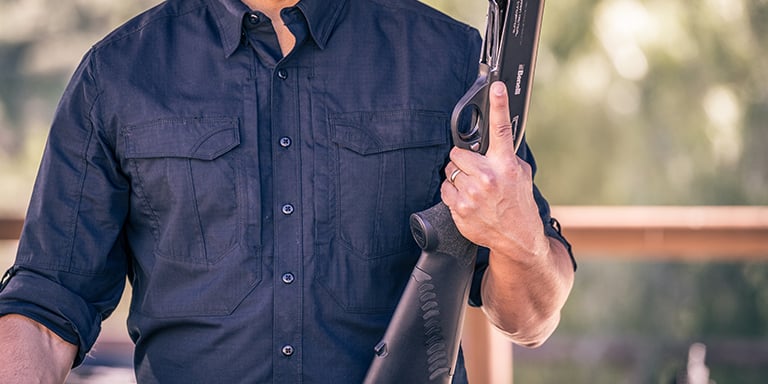
Before discussing the most common uses of shotguns, it may be helpful to review the anatomy and terminology.
Basic terms
We won't cover all shotgun terms here - just the most common and important ones.
-
The caliber of a shotgun is the equivalent of the caliber of rifles and pistols. It describes the size and power of the shot, with a lower gauge indicating bigger, deadlier projectiles. The most common shotgun calibers (from smallest to largest) are .410, 20, 12, and 10.
-
The shells are the bullets version of a shotgun .
-
THE cannon is the part of the barrel from which the shells are fired.
-
There bedroom (Or cylinder head ) is the rearmost part of the barrel, the part into which the shells are loaded.
-
Depending on the type of shotgun, cartridges are either loaded into a tubing, a store removable or directly in the bedroom by hand.
-
I' elevator (in pump-action and some semi-automatic models) moves the shells from the tube into the chamber.
-
THE stock , if present, rests against the shooter's shoulder to provide support and stability when firing. Stockless shotguns instead have pistol grips , which are more compact but more difficult to use. Some shotguns have both a stock and a pistol grip.
-
There trigger activate it striker when pulled. The firing pin, in turn, strikes the primer of the currently loaded shell in the chamber, causing the gun to fire.
-
Shotguns are cycled by moving the front to the back, then returning to its original position.
-
Snap-action models have a upper lever , which is used to open the breech for loading and unloading.
-
A starter is an optional piece that attaches to the end of the barrel and decreases its diameter, thus decreasing the spread of the shot.
Although shotguns (in most cases) are considered mechanically simple weapons (especially compared to some handguns and rifles), it's always good to know how their various parts work together.
Types of actions
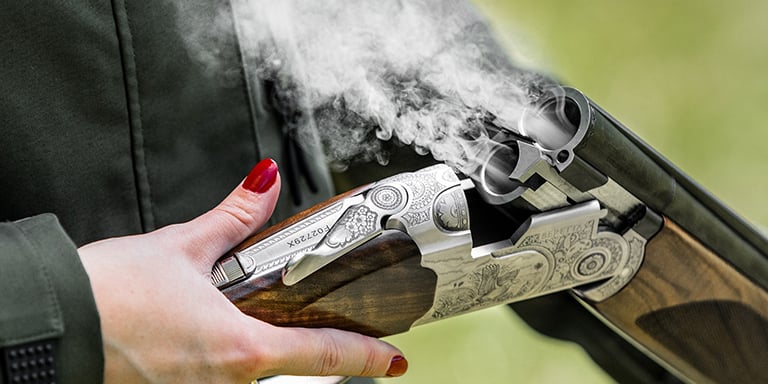
Civilian-legal shotguns come in three action types: pump action, semi-automatic, and break-open. "Action" is the mechanical process by which a firearm operates.
-
Pump-action shotguns are the simplest, most affordable, and most reliable, as cartridges must be loaded directly into the chamber by hand. On the other hand, this makes them slow to reload and the ammo capacity is low.
-
Shotguns are the most popular variety. Shells are loaded into a tube, after which they are recycled back into the chamber, one at a time, each time the user "pumps" the gun. Pump-action guns offer the best balance of simplicity, reliability, affordability, and ammo capacity.
-
Semi-automatic shotguns fire one round with each pull of the trigger without requiring any additional input from the user. They're expensive, mechanically complicated, and difficult to clean, but they're capable of some truly formidable firepower, and magazine-fed models can hold plenty of shells.
Ammunition Types
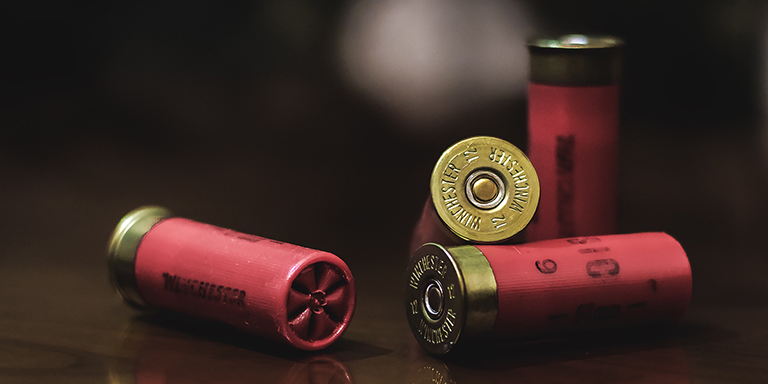
There are nearly a dozen types of ammo that shotguns can use, but most are highly specialized and uncommon.
The two most common types you'll find are shooting and slugs. The cartridges contain from four to a few dozen spherical bullets that spread and hit the target simultaneously, causing devastating damage over a wide area.
Slugs, on the other hand, are single, massive projectiles that concentrate all of the shotgun's considerable power into a single point of impact. Slugs are ideal for penetrating thick walls or armour, or for taking down large game.
Why do you want a shotgun?
Many first-time shotgun buyers just want something basic, reliable, and affordable. These are good things to look for in a shotgun, but the best way to buy the right one for you is to carefully consider the specific purpose you want it to serve.
home defense
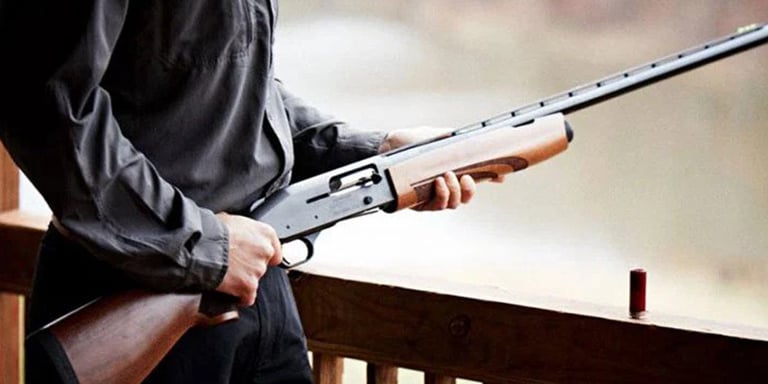
The majority of shotgun owners have one primarily (but not necessarily exclusively) for home defense; many shotguns can fulfill multiple roles as well. 12-gauge shotguns are especially popular for home defense because they have tremendous stopping power, are affordable, and are mechanically reliable. Other important considerations for home defense shotguns are overall length, capacity, and caliber.
Shorter shotguns are easier to maneuver through hallways and tight spaces. However, barrels shorter than 18" are illegal unless you first obtain a tax stamp from the ATF for an SBS (short barrel shotgun) or AOW (any other weapon). Shorter barrels increase the spread of the shot considerably, but this is rarely a big concern indoors.
Double-barreled and super short shotguns can only hold 2, 3, or 4 shells, which is fine for home defense (as long as you don't miss). Full-size shotguns or magazine shotguns can hold 7 or more shells, making capacity less of a concern.
20 and 12 gauge shotguns are best for home defense because they have great stopping power, but not so much that over-penetration becomes a major problem. Buckshot (we recommend #4) is usually the best; slugs are much more likely to penetrate multiple walls, potentially injuring or killing innocent bystanders.
Chase

Short barrel shotguns are generally poor for hunting. Most hunters want longer barrels for greater accuracy. Longer, heavier barrels are also better able to withstand high-powered slugs that big game hunters often prefer.
Semi-automatic shotguns may be illegal for hunting in your state, so be sure to check with your local fish and game department. The caliber and type of ammunition you choose will depend heavily on what you are hunting. Small game, of course, requires smaller calibers and lighter ammunition.
Sportive shoot

Whether you want to shoot shotguns competitively or recreationally, the type of shotgun you need will depend almost entirely on the sport in question.
For example, casual 3-gun shooters often use mid-level pump-action pistols, while more serious competitors invest in expensive, high-quality semi-automatic models. Trap and skeet shooters, on the other hand, usually have to use shotguns or, less commonly, shotguns.
The club or league you join may have additional rules regarding ammo gauges and types.
Carry shotguns (and rifles)
You can to carry And carry a weapon if you are hunter , sports shooter Or collector provided respect the regulations on carrying and transporting weapons.
THE hunting permit and the validation title of the current year give the right to to carry tear during a hunting activity .
THE hunting permit gives the right to carry a hunting weapon during a hunting activity .
The weapon must be transported in such a way that not be immediately usable , by a technical device or by dismantling one of its elements.
Failure to comply with the regulations on carrying and transporting weapons is punished by a fine and an prison sentence .
The penalty applies even if the person is in good standing regarding the possession of the weapon.
A sports shooter can to use his weapon only in the shooting range of an approved sports association .
He can have the gun in hand uniquely in front of the firing point .
There valid shooting license issued by the French Shooting Federation gives the right to carry a weapon in the practice of this sport .
The weapon must be transported in such a way that not be immediately usable by a technical device or by dismantling one of its elements.
Failure to comply with the regulations on carrying and transporting weapons is punished by a fine and an prison sentence .
The penalty applies even if the person is in good standing regarding the possession of the weapon.
Other Considerations
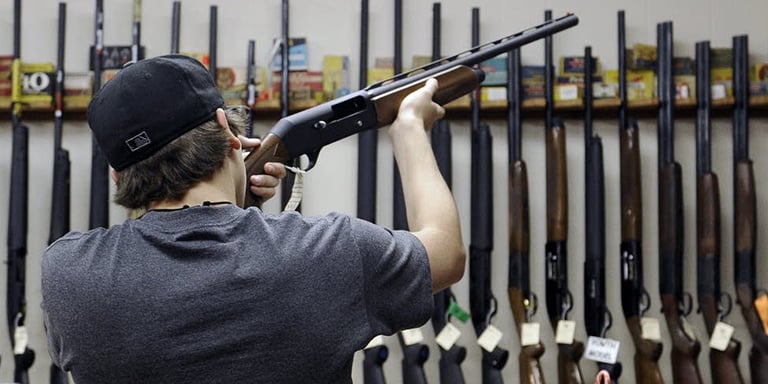
You're almost ready to start buying your first shotgun, but there are a few final things to consider first.
Security
Most shotguns have mechanical safety mechanisms to prevent the gun from being fired inadvertently. Whichever model you choose, make sure you are completely comfortable with the location and style of security. Most often the switch or safety button will be located directly behind or above the trigger assembly.
Reliability
In general, most shotguns are very reliable, but some are more reliable than others. Break-action models are the most reliable because they have almost no moving parts - there is almost nothing in them that can break. Shotguns are only slightly less reliable; they have more moving parts, but they're still very simple designs built to take a beating. Semi-automatic shotguns are much more complex and therefore more prone to malfunctions.
Ability
Some shotguns can accept magazines or drums that hold 20 or more rounds, but these are expensive and uncommon. Most models contain 7 shells or less. Provided you train well and often, 7 shells should be more than enough for almost any situation.
If you choose a shotgun that holds less than 5 rounds, be sure to practice reloading especially. Hand-loaded, tube-fed shotguns take much longer to reload than most other firearms.
Overall size and weight
Full-size shotguns are usually 22 to 28 inches long and weigh around 10 pounds. In most situations, their length and weight are an asset, not a liability - longer barrels provide greater accuracy and heavier frames absorb recoil more effectively, making the gun easier to control.
If you need a shotgun for home defense, it may be worth the extra cost and wait time to go for a model with a shorter barrel. These firearms are much easier to use indoors, especially if you live in a small house or apartment. Just be sure to follow all ATF regulations.
Price
Snap-action and pump-action shotguns tend to be relatively easy on your wallet; there are plenty of great entry-level models for $500 or less. Semi-automatic shotguns are a bigger investment. They usually start around $1,500, and some can cost a lot more.
Accessories
We recommend that you get a sling and one case to easily and safely transport your new shotgun, but other than that, you don't need much more than a basic cleaning kit. It's best to avoid going crazy with accessories until you've put in enough scope time to be sure you've picked the right shotgun for your needs.
Cleaning
Regular shotgun maintenance is easy - and very important. Always clean your shotgun within 24 hours of firing, ideally right after .
As with any major purchase, it's best to try before you buy. Visit a local shooting range that rents shotguns and try out several different models to help narrow down your shopping list. Once you've made your purchase, be sure to train well and often. All gun skills are perishable, but shotgun skills in particular are perishable. Nonetheless, as long as you are willing to invest enough time and money, you will find that a reliable shotgun is one of the best things you can buy.
0 comments